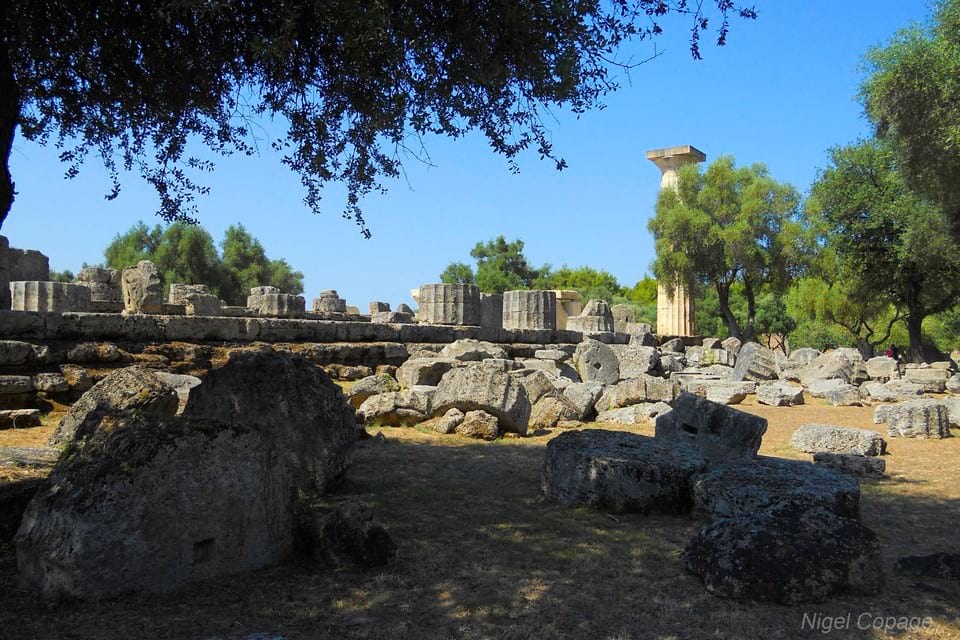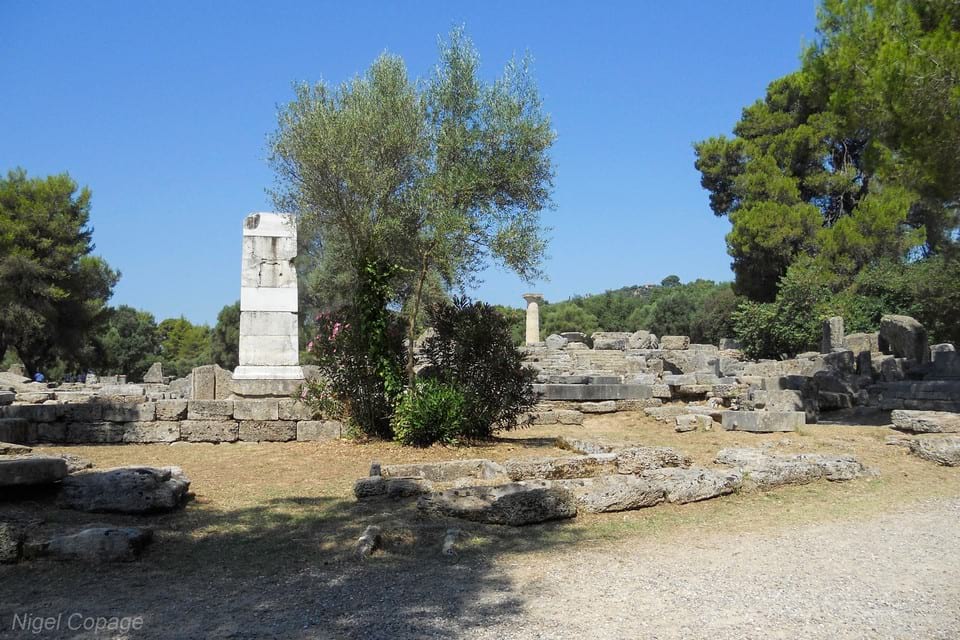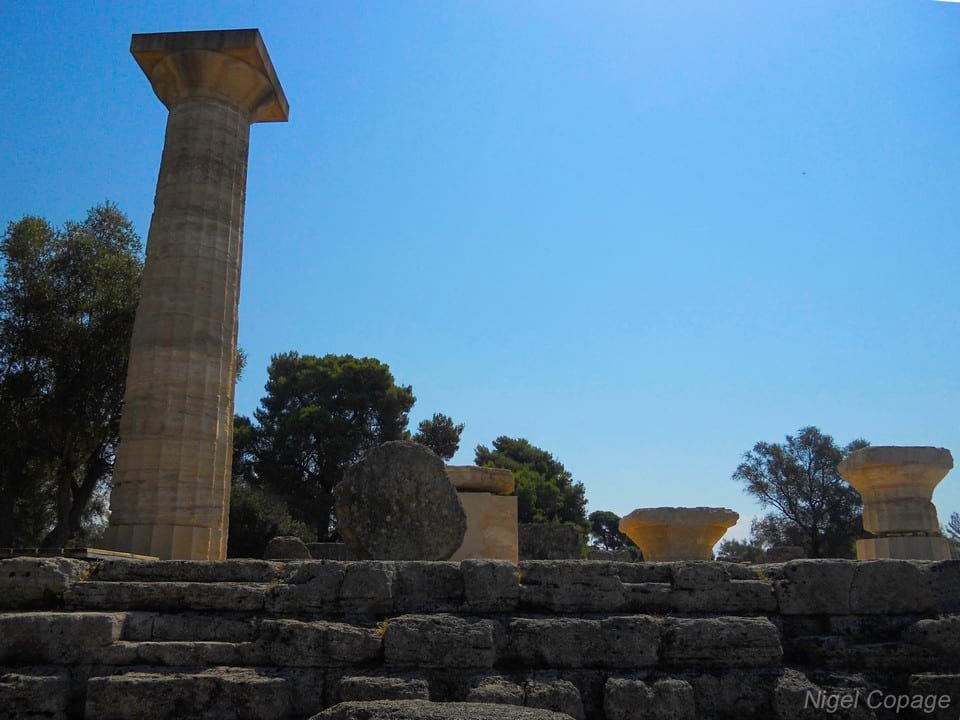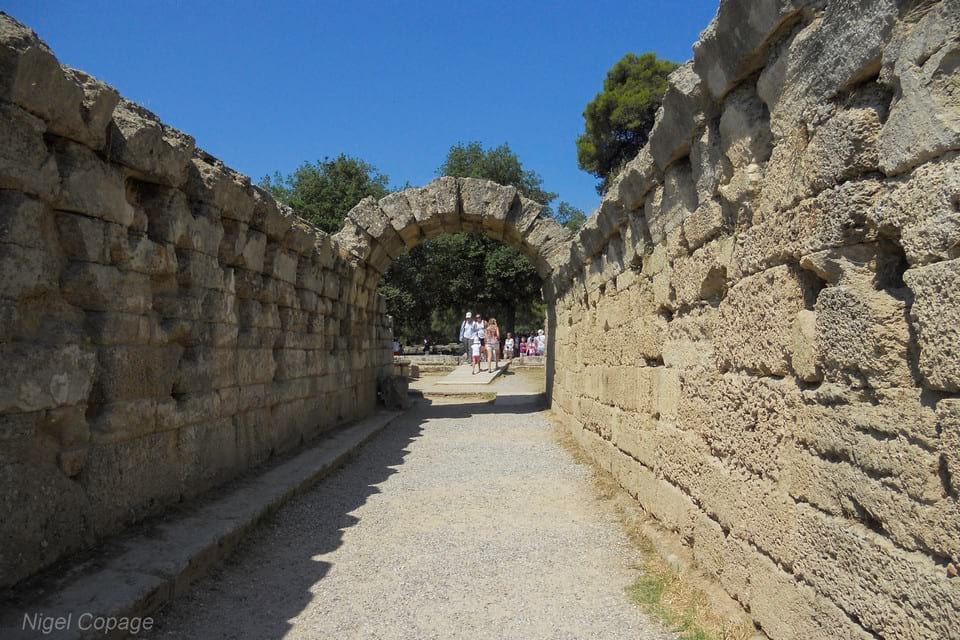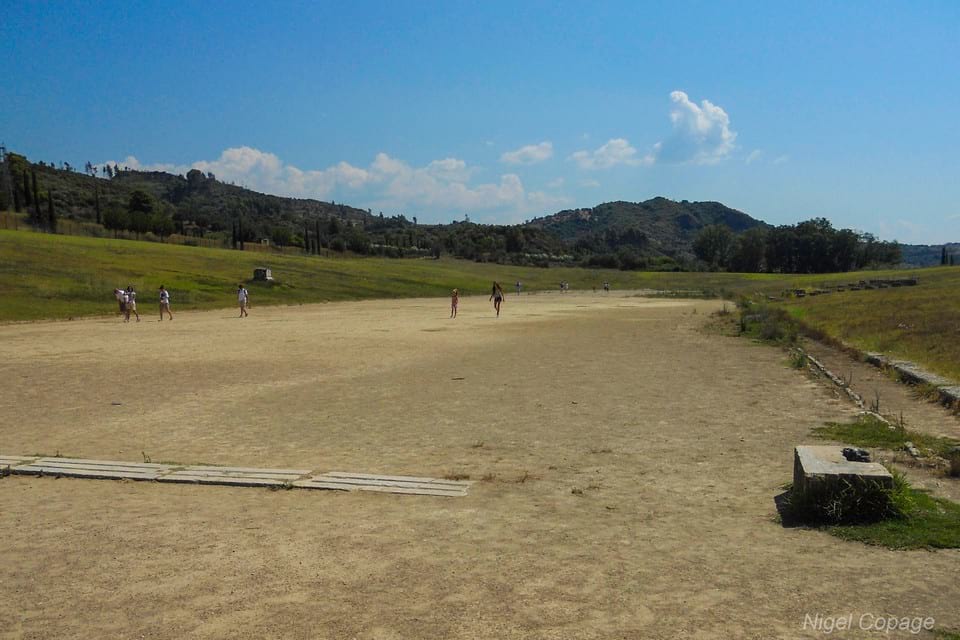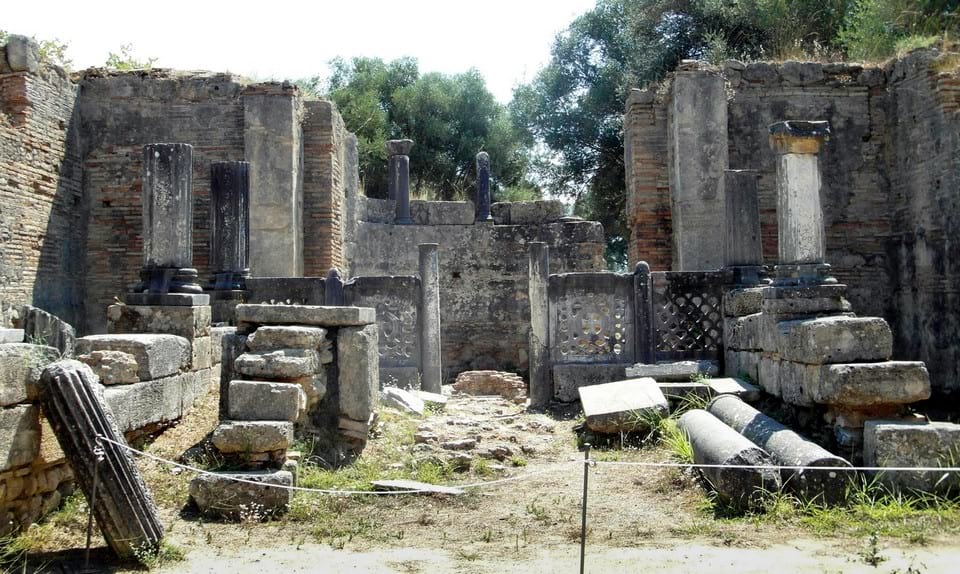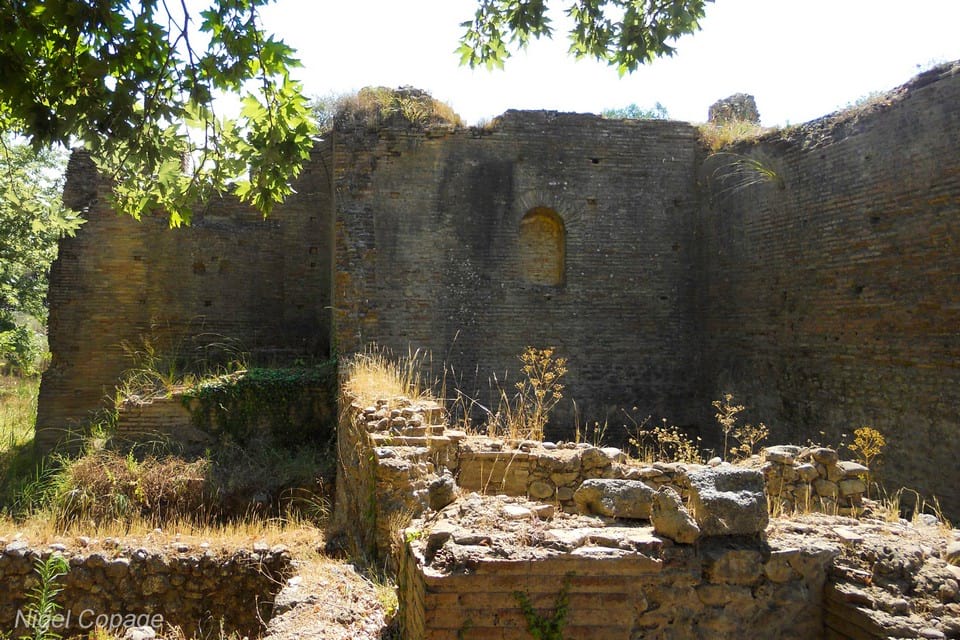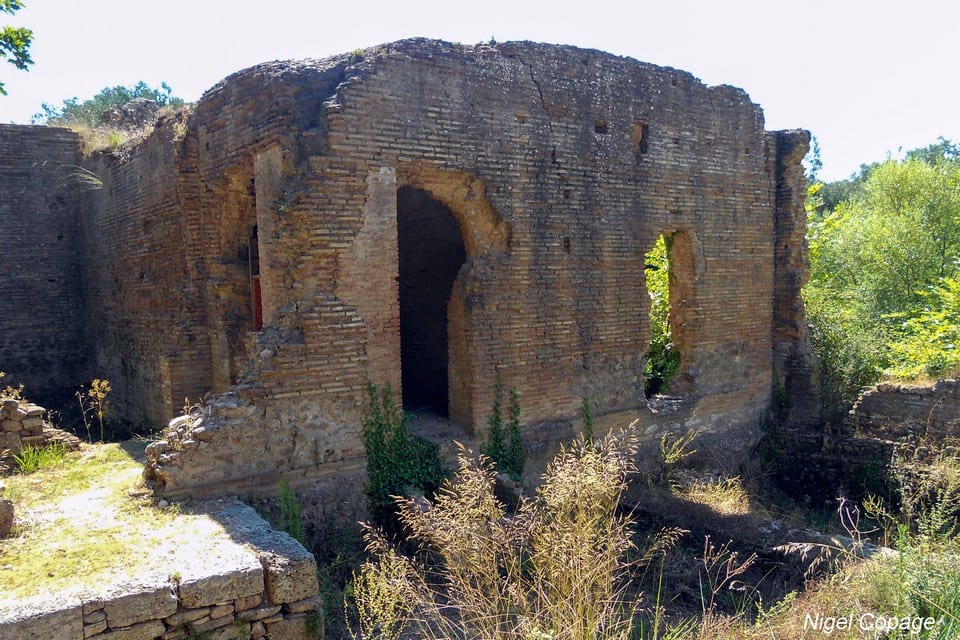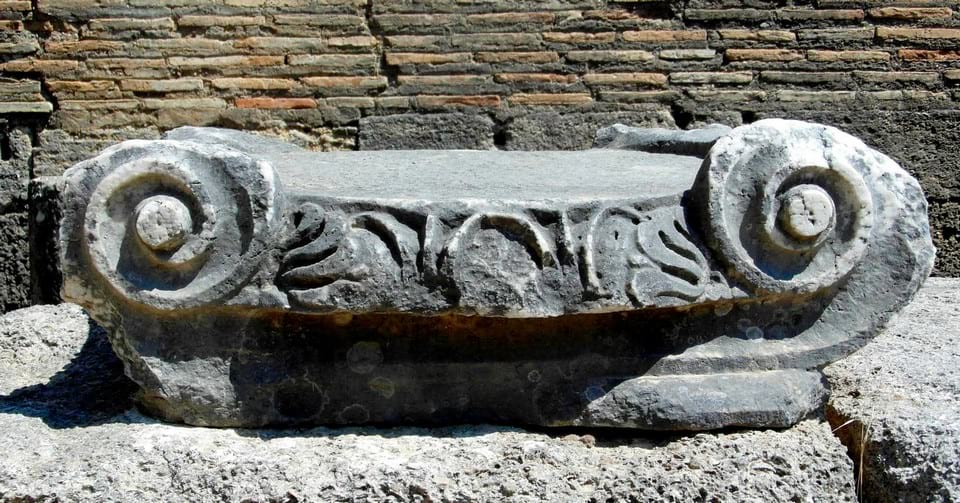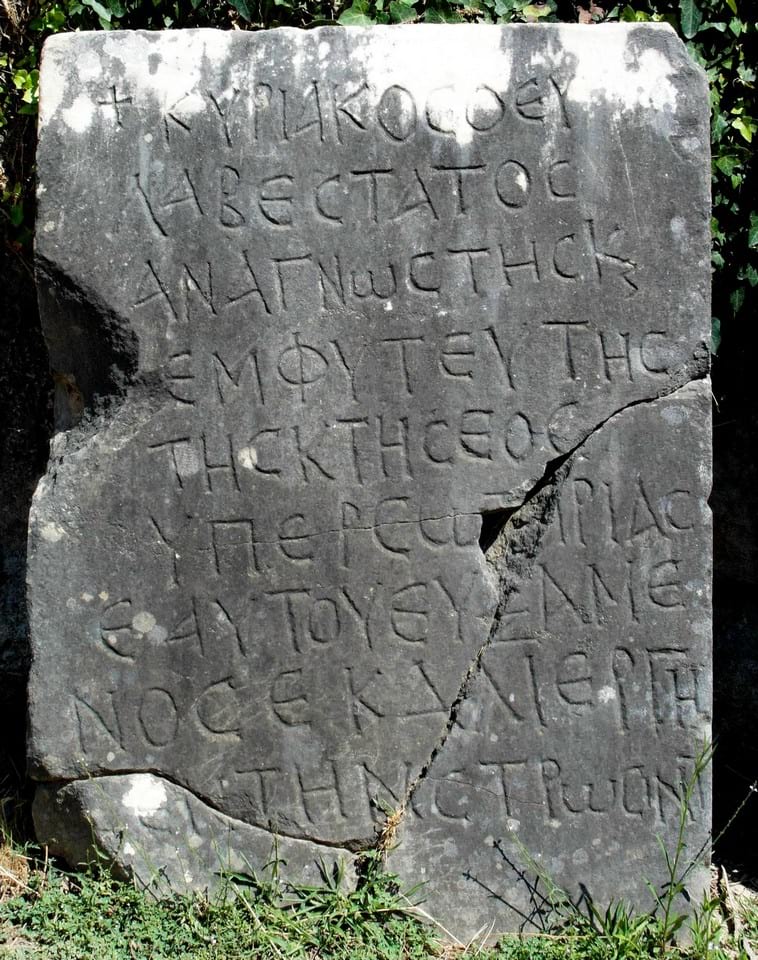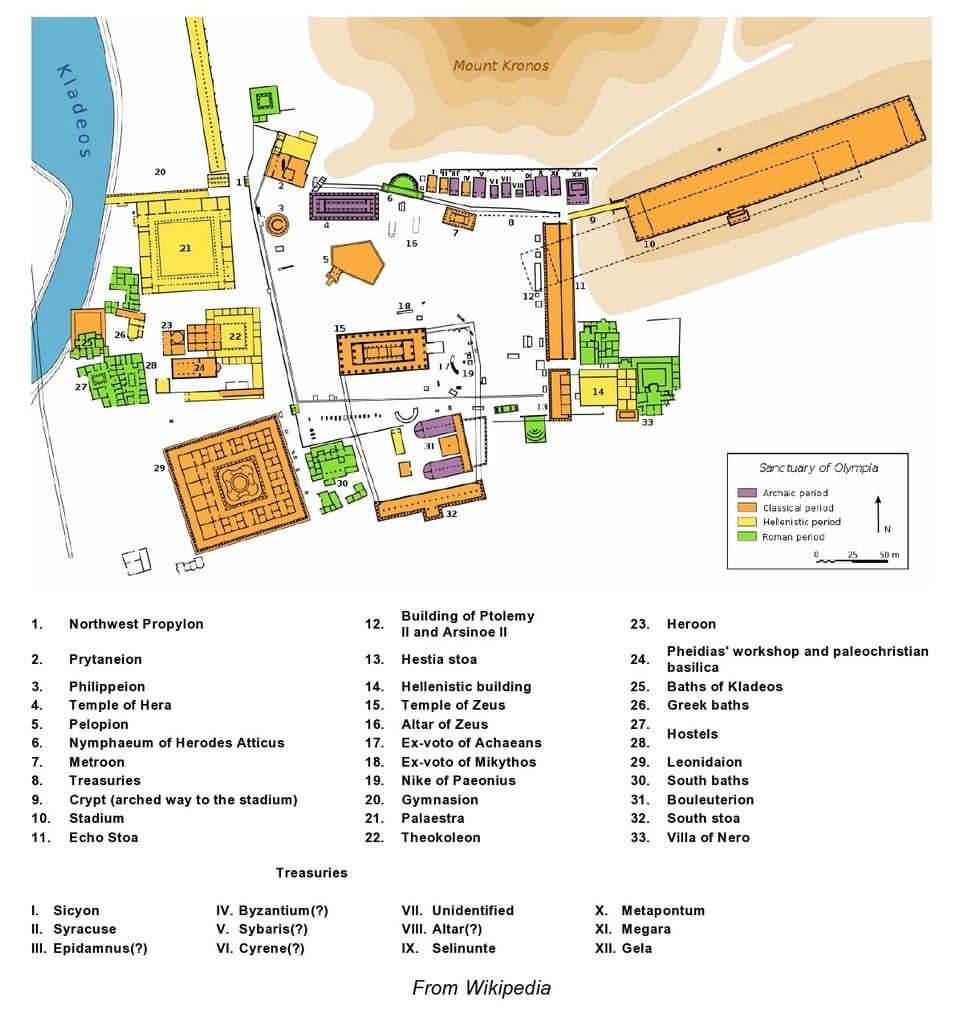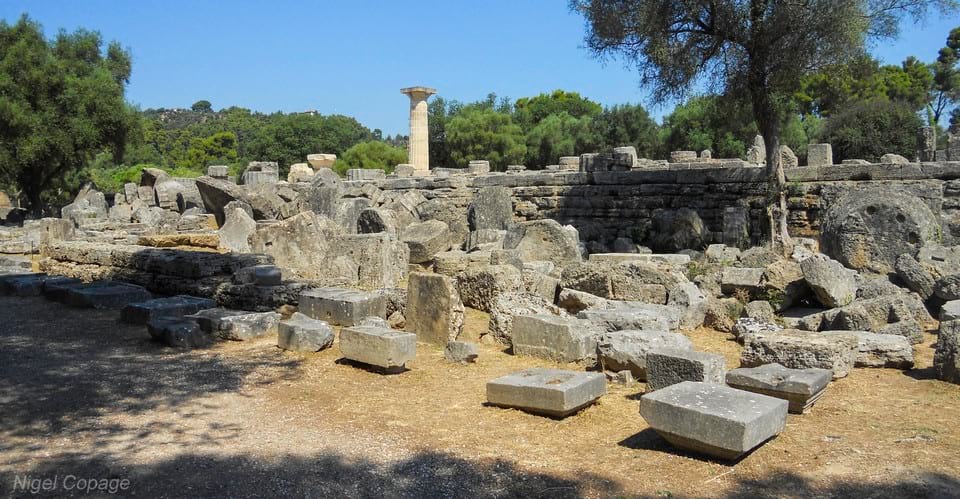
In the 10th century BC, Olympia was a sanctuary for the worship of Zeus, father of the twelve Olympian gods. Later it became a major religious and sports centre in ancient Greece with games held every 4 years from the 8th century BC to the 4th century AD. Olympia was an important panhellenic centre which attracted people from right across the Greek world and which helped to build a sense of Greek identity.
History
Around the 10th or 9th century BC, Olympia became a religious centre for the worship of Zeus, the father of the twelve Olympian gods of Mount Olympus (some 500km north of Olympia so not to be confused). The sanctuary was originally known as the “Altis” from the Greek word meaning “grove” because the area was full of wild olive trees. Among the earliest buildings were the Temple of Hera, the Temple of Zeus and the Pelopion.
According to Pausanias who visited in the second century AD, there were over 70 temples in total as well as various treasuries, altars, statues and other structures devoted to a range of deities. Unlike sites such as Delphi where everything was tightly packed within the boundaries of the “temenos” (sacred area), the structures in Olympia sprawled beyond the boundary walls. The most important of these include the Temple of Hera (first erected in 7th century BC), the Temple of Zeus (the largest in the Peloponnese and which housed the 12m high statue of Zeus by the 5th Century BC sculptor Pheidias), The Philippeion (a circular memorial to the Macedonians), the Stadium (the largest in ancient Greece with a capacity of 45,000 spectators) and the Bouleuterion (Assembly hall for the Olympic Council).
The first Olympic games (known as the “Olympia”) were held in 776 BC and were intended to honour Zeus. The event was organized by regional powers: the King of Elis, Lycurgus of Sparta and Kleosthenes of Pisa. An important aspect of the games was that they involved a cessation of hostilities for their duration, a sacred truce known as the “ekecheiria”. This allowed competitors to travel from their home city-states in safety. The four year period between games was known as the “Olympiad” and was an integral element of the ancient Greek chronological system.
The Olympics became the dominant sporting event in the ancient Greek world among several such panhellenic games and helped to disseminate Greek culture throughout the Meditteranean region. They embodied the spirit of fair competition among men. For several hundred years only free born men from Greek city-states or kingdoms were allowed to enter, although during the Roman period this was opened up to all Roman citizens. Early events included foot races, javelin throwing and wrestling matches with many other events being added later such as chariot races. The winners were awarded an olive wreath or crown (coming second or third counted for nothing).
In time the games became a political tool used by city-states to assert dominance over their rivals and politicians would often use occasion of the games to announce new political alliances. The Olympics also involved religious celebrations and artists would treat the festivities as an opportunity to display their work.
The last Olympic games were held in 393 AD shortly before the Roman Emperor Theodosius the Great closed down such ancient sanctuaries and banned the worship of pagan deities. In 426 AD the Temple of Zeus was destroyed when Theodosius II enforced an edict banning pagan festivals and in later years the site was inhabited by a Christian community. Two earthquakes in the 6th century AD completely devastated area and following repeated flooding the settlement was completely abandoned in the early 7th century.
Over the next millenium the site became buried under alluvial deposits mainly due to successive flooding from the nearby rivers. By the eighteenth century much of it was up to 6 or 7 metres below ground so most buildings could not be seen. However in 1766 the exact location was identified by an English traveller, Richard Chandler. In the early nineteenth century other antiquarian travelers such as William Leake also visited the site.
Excavations
The first excavations began in 1829 shortly after Greece became independent and were conducted by the French “Scientific Commission of the Morea Expedition”. In 1875 the excavation and preservation of the site became the responsibility of the German Archaeological Institute in Athens and over the next six years the central part of the sanctuary was excavated including the Temple of Zeus, the Temple of Hera, the Metroon, the Bouleuterion and the Philipeion. Some 14,000 objects were recorded, many of which were displayed in a museum on the site.
In 1936, on the occasion of the Berlin Olympics, German archaeologists conducted more systematic excavations, particularly in the area south of the stadium which included the South Stoa, the bath complex and the gymnasion.
Further excavations undertaken by the German Archaeological Institute took place intermittently between 1952 and 1996 including the Prytaneion and Pelopion. During this time modern technology facilitated more accurate dating of the buildings, structures and graves.
Click here for information on tickets, opening hours etc
